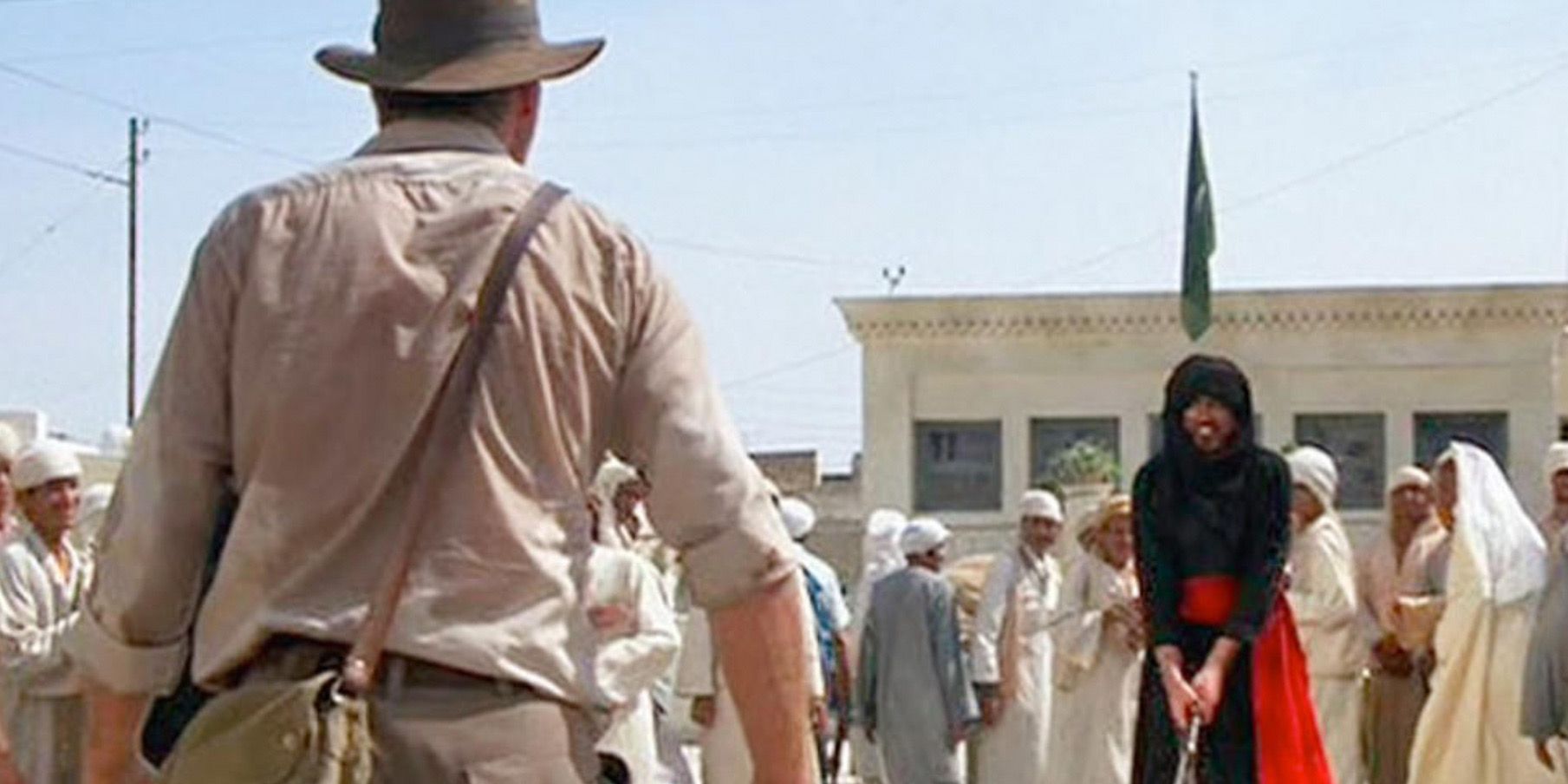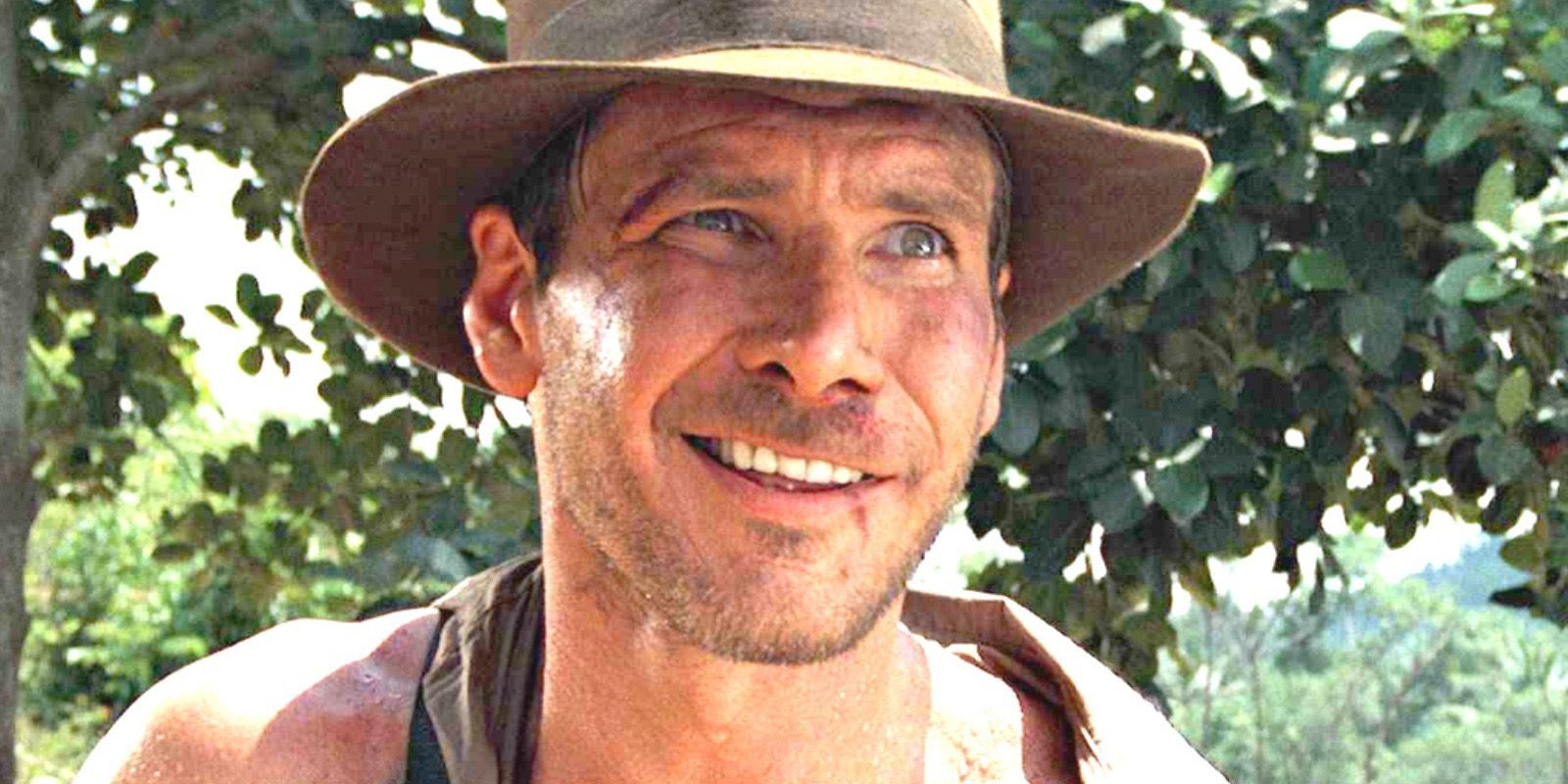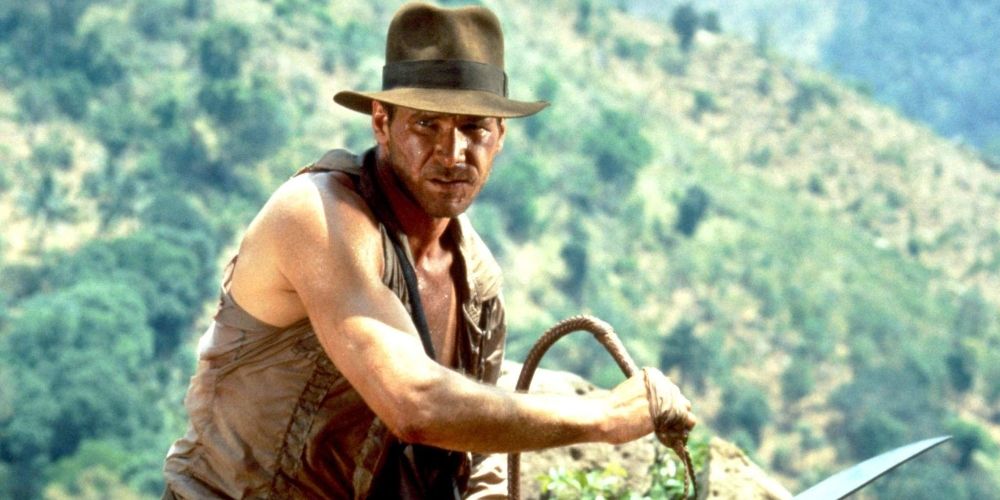In Raiders of the Lost Ark, there is a scene where Indiana Jones faces a swordsman, which was filmed differently than initially intended. Indy shoots his opponent after the latter shows him how skilled he is with the sword. It is probably one of the character’s most famous scenes, but its underlying messages are uglier than its laughs.
In the famous scene where Indiana Jones is being chased through the streets of Cairo, he meets a skilled swordsman who brandishes his sword, preparing for what is expected to be a duel. However, Jones simply picks up his pistol and shoots him. It was meant to be a lengthier fight between the two, but Harrison Ford was suffering from dysentery and could only film for small intervals of 10 minutes per take. The actor went over the scene with director Steven Spielberg, and they realized it would take at least two to three whole days to film the whole fight.
Facing the fact that it was the last scene to be filmed on location before moving to England, and to save the production time and money, Harrison Ford suggested changing it to the version that audiences now know, learning that Spielberg was thinking the same thing. It was a bummer for the stuntman, who’d spent several months preparing for the scene. After Raiders of the Lost Ark opened, it became quite an iconic moment that defined the character. Yet, in light of subliminal and deeper messages, it is also a very disconcerting trait of Hollywood entertainment.
In his book Indiana Jones in History, author Justin M. Jacobs writes about the history of archeology and what it meant for Western society. To him, the swordsman scene is quite insulting precisely because it embodies a series of messages that reflect a repellent representation of how Western archeologists treated foreign countries in the name of scientific preservation. Even if the filmmakers weren’t aware of this, by approving this scene and laughing about it, we are brushing over the fact that it is celebrating a Western modern superiority.
Jacobs considers that the scene hides two specific messages. “The first is that traditional Oriental masculinity is no match for a Western scientist armed with more sophisticated weaponry,” he writes. The second is that killing is funny and okay when the character is secondary and therefore expendable: “If the Arab swordsman mattered to the story in any way at all, this scene would not be funny.” This sort of representation is in line with other entertainment film discourses that are highly subliminal yet effective in driving audiences to be emotionally captivated and invested in a narrative.
“The growing prominence of formerly marginalized voices in the public sphere has convinced many people of the need to diversify the cast of mostly white protagonists in Hollywood productions,” continues Jacobs. Unfortunately, even if today's audiences are more open to challenging representation in film, titles like Uncharted keep portraying white western characters exploring remote parts of the world in search of treasures and ancient ruins (and sometimes killing) in the name of science and personal gain without facing proper moral consequences.
Hollywood and history could go hand-in-hand with creating stories that could both entertain and educate. Pointing the finger at creative decisions from past decades is also dismissing other factors that influenced the way films were made. Now, there’s a proposal for change. As Jacobs eloquently puts it, “an epic story is waiting to be told here, one that would better stand the test of time.”



